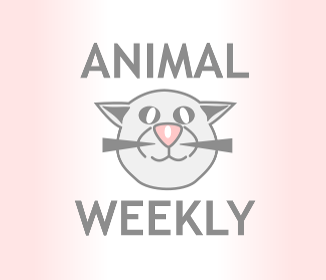Consumers need, and quickly go through loads and loads of cat litter. Likewise, cat rescues also use seemingly endless amounts of litter or bedding every week.
When you consider there are over 80 million housecats living in homes across the USA alone that makes for a huge industry!
With such a large cat litter and bedding industry many options have arisen to meet the needs of consumers and animal rescues alike. This post will review some of the most common types of cat litter and cat bedding. Hopefully this will help you to help you find the solution that works best for your needs.
The main types of cat bedding and litter discussed in this article include:
-Clumping cat litter
-Clay cat litter
-Corn husk bedding
-Pine shaving bedding
Each of these muitiple varieties has their unique advantages and disadvantages, so let’s get started, but first a quick disclaimer: Please keep in mind that the opinions and views expressed below are representative of the author and may differ from those of others. You may need to try several litters prior to finding the right one for your needs.
Ok – now that that’s taken care of it’s time to review the types of litter to see which one may best suited for your needs!
Clumping Litter
Extremely heavy, but when cats urinate on it clumps form for easy extraction. With that said sometimes it may begin to have a bit of an odor over time even if scooping often to keep it clean. There may be brands that eliminate odor almost completely.
Clumping litter is generally the most expensive type of cat litter. It also outlasts the other types of cat litter since only the clumps and small amounts attached to stools are removed when scooping. Often using a small grocery bag is ideal to collect the clumps and stools when scooping.
Often cluping litter comes in bags that can be used for garbage once empty. Also it commonly comes in plastic buckets that can be used for other things the litter is gone.
You will need to read reviews or experiment to find the ones most suitable for your needs.
Author’s Opinions – Clumping Litter:
Cost: High
Weight: High
Availability To Find: High
Lifespan: High
Dust: Low / Medium
Odor: Low / Medium
Absorbtion: High
Mess Outside Litter Box: Medium
Difficulty To Dispose: Low
Likely For Consumers: High
Likely For Cat Rescues: Low / Medium
Non-Clumping Clay Litter
Extremely heavy, and doesn’t smell good after used a few times by the cats. There are scented options that work to varying degrees. No clump scooping is required with clay cat litter since it’s completely dumped once it gets poluted. Although, like all litter and bedding, you will likely need a scoop to scoop out excess if it gets stuck to the walls or floor of the litter box.
Fortunately it’s relatively low cost compared to clumping litter, but also has a much shorter lifespan. Some can be particularly dusty, so look for a low dust feature when considering your options.
Generally clay littler comes in bags that can be used to dump dirty litter in.
Author’s Opinions – Non-Clumping Clay Litter:
Cost: Medium
Weight: High
Availability To Find: High
Lifespan: Low
Dust: Low / Medium / High
Odor: Low / Medium
Absorbtion: High
Mess Outside Litter Box: Medium
Difficulty To Dispose: High
Likely For Consumers: High
Likely For Cat Rescues: Low / Medium
Corn Husk Bedding
Corn husk bedding can be a light weight alternative to cat litter. It’s generally less expensive than clay litter, although it doesn’t mask odor particularly well. It can have a slight corn odor to it as well, and be slightly dusty from the manufacturing process. With that said, it works pretty good, and seems to absorb relatively well.
A side benefit is that it often comes in large bags that can be reused to dump old litter or for garbage etc. Corn husk bedding can often be found at farm supply stores.
Author’s Opinions – Corn Husk Bedding:
Cost: Low
Weight: Medium
Availability To Find: Low
Lifespan: Low
Dust: High
Odor: High
Absorbtion: High
Mess Outside Litter Box: Medium
Difficulty To Dispose: Medium
Likely For Consumers: Low
Likely For Cat Rescues: High
Pine Shaving Bedding
Pine shaving bedding is a low cost, low weight alternative to cat litter. Almost no dust. High in odor though. This form of bedding is not the best option in terms of absorbtion of cat urine, but still gets the job done. There don’t seem to be many drawbacks to using this type of material for litter beyond the odor.
The only question that comes to mind is whether cats can get splinters from the pine shavings, but it doesn’t appear so.
It can be condensely packed in plastic bags, and expands once loosened up after out of the bag. Hard to open and extract the shavings, so requires cutting off almost entire side of the bag. The bags generally can’t be used after empty as well as the other options discussed, but still can have some use for garbage etc.
Author’s Opinions – Pine Shaving Bedding:
Cost: Low
Weight: Low
Availability To Find: Medium
Lifespan: Low
Dust: Low
Odor: High
Absorbtion: High
Mess Outside Litter Box: Low
Difficulty To Dispose: Medium
Likely For Consumers: Low
Likely For Cat Rescues: High
Concluding Thoughts
Hopefully you now have a better idea of what litter options, benefits and drawbacks that cat rescues need to consider.
Keep in mind there are multiple types of litter that are not covered in this brief article, that may also be worthy of further research. Regardless, I hope this post has been helpful to you.
Thank you for reading this article, please take a look at some of our other helpful topics
-Randy / Animal Weekly

